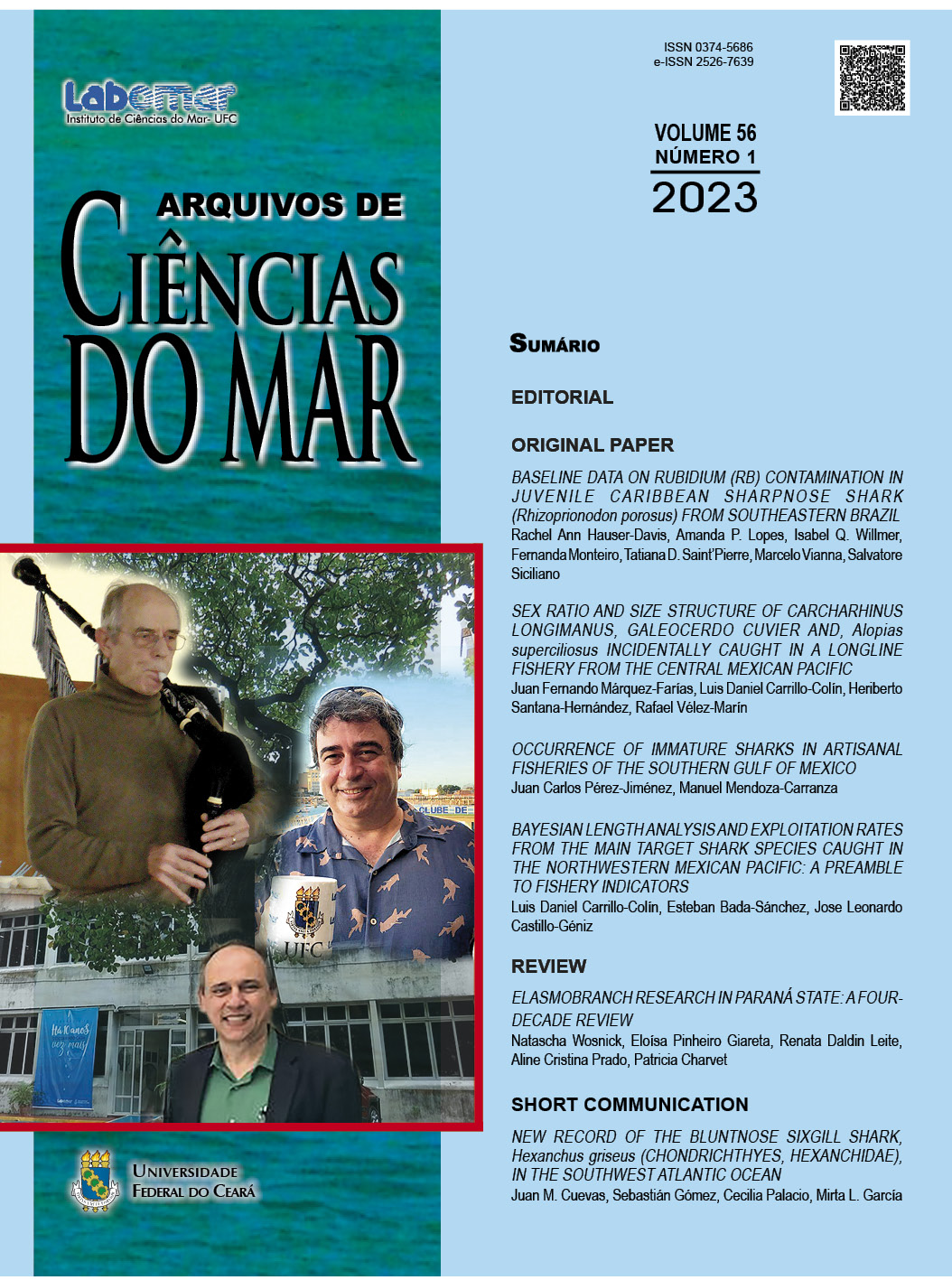BASELINE DATA ON RUBIDIUM (Rb) CONTAMINATION IN JUVENILE CARIBBEAN SHARPNOSE SHARK Rhizoprionodon porosus FROM SOUTHEASTERN BRAZIL
Dados de referência sobre contaminação por rubídio (Rb) em cações-frango Rhizoprionodon porosus juvenis do Sudeste brasileiro
DOI:
https://doi.org/10.32360/acmar.v56i1.92056Abstract
Although pollution has been recently identified as a priority for elasmobranch conservation, metal contamination assessments in sharks and rays are still scarce, especially in southeastern Brazil. In this regard, rubidium (Rb) is a biomagnifying non-essential element determined in only two elasmobranch assessments to date. Therefore, the aim of this study was to obtain baseline Rb data and discuss the implications of Rb concentrations in the muscle and liver of the vulnerable Caribbean Sharpnose shark Rhizoprionodon porosus from Southeastern Brazil. Samples from 18 juvenile specimens were analyzed by inductively coupled plasma mass spectrometry following acid decomposition. When grouping males
and females, muscle concentrations (1.117 ± 0.269 mg kg-1 w.w.) were significantly higher than liver (0.677 ± 0.146 mg kg-1 w.w.), indicating probable Rb bioaccumulation. Significant differences were observed between male and female liver and muscle Rb concentrations, both higher in muscle. Females also presented significantly higher liver concentrations. A negative correlation was observed between total length and liver Rb when grouping males and females, which may indicate the contaminant dilution effect, while a positive correlation was noted between total length and muscle Rb for males, indicating bioaccumulation processes. Significant ecological concerns regarding Rb contamination for this group are,
therefore, noted, requiring further investigations.
Keywords: Chondrichthyes, toxic elements, bioaccumulation, environmental pollution, Elasmobranchii.
Downloads
Published
Issue
Section
License
1. Proposta de Política para Periódicos de Acesso Livre
Autores que publicam nesta revista concordam com os seguintes termos:
- Autores mantém os direitos autorais e concedem à revista o direito de primeira publicação, com o trabalho simultaneamente licenciado sob a Licença Creative Commons Attribution que permite o compartilhamento do trabalho com reconhecimento da autoria e publicação inicial nesta revista.
- Autores têm autorização para assumir contratos adicionais separadamente, para distribuição não-exclusiva da versão do trabalho publicada nesta revista (ex.: publicar em repositório institucional ou como capítulo de livro), com reconhecimento de autoria e publicação inicial nesta revista.
- Autores têm permissão e são estimulados a publicar e distribuir seu trabalho online (ex.: em repositórios institucionais ou na sua página pessoal) a qualquer ponto antes ou durante o processo editorial, já que isso pode gerar alterações produtivas, bem como aumentar o impacto e a citação do trabalho publicado (Veja O Efeito do Acesso Livre).

